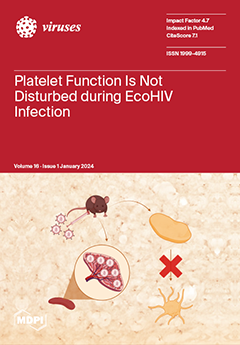Torque teno virus (TTV) is emerging as a potential marker for monitoring immune status. In transplant recipients who are immunosuppressed, higher TTV DNA loads are observed than in healthy individuals. TTV load measurement may aid in optimizing immunosuppressive medication dosing in solid organ transplant recipients. Additionally, there is a growing interest in the role of HDL particles in immune function; therefore, assessment of both HDL concentrations and TTV load may be of interest in transplant recipients. The objective of this study was to analyze TTV loads and HDL parameters in serum samples collected at least one year post-transplantation from 656 stable outpatient kidney transplant recipients (KTRs), enrolled in the TransplantLines Food and Nutrition Cohort (Groningen, the Netherlands). Plasma HDL particles and subfractions were measured using nuclear magnetic resonance spectroscopy. Serum TTV load was measured using a quantitative real-time polymerase chain reaction. Associations between HDL parameters and TTV load were examined using univariable and multivariable linear regression. The median age was 54.6 [IQR: 44.6 to 63.1] years, 43.3% were female, the mean eGFR was 52.5 (±20.6) mL/min/1.73 m
2 and the median allograft vintage was 5.4 [IQR: 2.0 to 12.0] years. A total of 539 participants (82.2%) had a detectable TTV load with a mean TTV load of 3.04 (±1.53) log10 copies/mL, the mean total HDL particle concentration was 19.7 (±3.4) μmol/L, and the mean HDL size was 9.1 (±0.5) nm. The univariable linear regression revealed a negative association between total HDL particle concentration and TTV load (st.β = −0.17, 95% CI st.β: −0.26 to −0.09,
p < 0.001). An effect modification of smoking behavior influencing the association between HDL particle concentration and TTV load was observed (P
interaction = 0.024). After adjustment for age, sex, alcohol intake, hemoglobin, eGFR, donor age, allograft vintage and the use of calcineurin inhibitors, the negative association between HDL particle concentration and TTV load remained statistically significant in the non-smoking population (st.β = −0.14, 95% CI st.β: −0.23 to −0.04,
p = 0.006). Furthermore, an association between small HDL particle concentration and TTV load was found (st.β = −0.12, 95% CI st.β: −0.22 to −0.02,
p = 0.017). Higher HDL particle concentrations were associated with a lower TTV load in kidney transplant recipients, potentially indicative of a higher immune function. Interventional studies are needed to provide causal evidence on the effects of HDL on the immune system.
Full article






